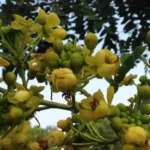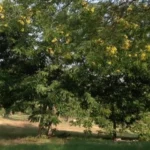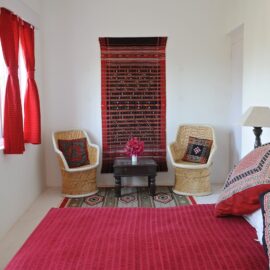Sanjharia, Ajmer Road, Jaipur -302042 INDIA
From
$189.0
Night







The muted green and yellow colours of the Khejri tree find their echo in this light filled room on the first floor. The soft furnishings and custom printed robes are in a mixture of green and yellow. Its other features include: a traditional king teak bed, a quaint antique writing desk, a large chest, and a traditional restored wardrobe. One of its special features is a cozy fireplace. From the windows you can gaze out on to the yellow and green flowering tops of a screen of siamese cassia trees interspersed with khejri trees. The sunny balcony hangs over the pool courtyard. And just next to it is a large sun deck.
The Khejri trees on the Savista estate that were pruned (and some pollarded) last winter, have all got back their dense green foliage. The sheep in the area are probably already eyeing their winter feed, and if there is a ‘social network’ that is active among them, the message should have already gone out that Savista’s trees are looking good enough to eat! Many guests ask us about this tree, since it is found everywhere around Savista and looks even more interesting when it is bare of leaves. And you can see lots and lots of stark-looking trunks and branches in the surrounding countryside during winter which is the traditional pruning season.
The Khejri is an iconic tree of Rajasthan. It is so admirably suited to the ecology of the region that it has acquired a whole body of folklore and cultural significance. It is drought and frost resistant, and can withstand the most extreme of temperatures. Its deep and extensive root system stabilizes the soil in the face of fierce desert winds, thus preventing soil erosion. Its tough roots travel long distances below the ground in search of the tiniest drops of water. This water is carefully absorbed by every part of the tree until it reaches the miniscule green-yellow leaves. The leaf-size is clear evidence of evolution at work, because the foliage stays green round the year, turning a pale yellow just when the leaves are ready to fall. Being a legume, the Khejri fixes nitrogen in the soil, and the nutritious fallen leaves act as additional fertilizer. Hence farmers ensure that these trees are spaced out across their fields.
Every part of the Khejri tree is useful to the local animal and the human population. The leaves – used as both green and dry fodder – are relished by the local sheep and camels. The generously-tufted branches provide welcome shade. The trunk is virtually termite-proof and is used in house-construction. The bark is used in the preparation of local medicines for common respiratory and stomach infections in keeping with the ancient Ayurvedic tradition. The fragrant resin makes for aromatic firewood. The green beans are cooked into a delicious vegetable dish. The beans are dehydrated by villagers for use through the year, and are also fed to farm animals during droughts.
The spiritual significance of the tree for the region’s farming communities is such that no Rajasthani wedding feast is complete without the vegetarian dish Khair Sangri prepared from the Khejri’s green beans. For the legendary environment-worshipping agricultural community called the Bishnois, the tree is so sacred that they would rather give up their lives than allow a single Khejri to be cut down.
Savista has over 150 Khejri trees, and many of them are several decades old. New trees can be seen coming up all over the estate as a result of fruits dropped by birds who feed on the beans. Every three years in the winter, Savista’s Khejri trees are pruned by rotation in keeping with local farming practices. Migrant sheep farmers offer to do the pruning, in return for being able harvest and bag the leaves for their sheep. They also get to use the small twigs as firewood. During the pruning period they live with their flocks on the host farm, and the animal droppings act as fertilizer for the soil.
At Savista we use the chopped branches to light our winter fires – in some of our guest rooms which have fireplaces, in our dining room and bar lounge, and for the evening bonfires around which guests share drinks and swap stories on chilly evenings.
Check-in/check-out: 12 noon.
For availability and reservations, please write directly to [email protected].
Main features:
Stunning, uniquely-designed, airy rooms with plenty of natural light and views of greenery all around.
Carefully selected handmade / restored Rajasthani furniture and artifacts, or a blend of traditional and modern furniture.
Very comfortable beds for the best possible sleep.
Restored colonial / traditional Indian / contemporary writing desk in most rooms.
Every room has either a sun terrace, or an additional glass-enclosed sitting room / patio with gorgeous views of the outdoors, or an attached balcony overlooking the pool. A few have fireplaces.
Room and bathroom windows can be opened to let in fresh air when preferred.
All bathrooms are ensuite, have hot and cold running water and rain showers, and views of tree-tops.
Facilities:
- Complimentary breakfast;
-
Tea / Coffee making facility;
-
Pure, natural drinking water from Savista’s borewells (complimentary bottled water on request);
-
Complimentary nibbles;
- Free wireless internet;
- Air conditioning;
- Space heating in chilly weather;
- Sumptuous duvet and high quality cotton bed linen;
- Hundred percent cotton towels, robes and room slippers;
- Branded herbal bath products.
Other Facilities:
- Business services (scanning, copying, printing);
- Laundry and ironing*;
- Hair dryer;
- Concierge service;
- Maps and travel guides;
- Medicines, germicide gargle, sewing accessories etc. (an “Ask For” menu is placed in each room. If you require some other service that is not listed, please ask and we will try our best to arrange it for you);
- Doctor/dentist appointments and facilitation;
- For guests with physical disabilities, one room can be outfitted to suit their needs. Please let us know when booking.
(* chargeable)
N.B.
Most rooms feature a large double bed (king-size), and are for single/double occupancy;
Five rooms can be adapted into twin-bedded rooms (please let us know when you are specifically looking for a twin room;
A child below 4 stays free if sharing the parents’ bed;
Children of 4 and above require an extra bed. Four of our rooms can accommodate an extra rollaway bed (for a child only) for a small extra charge. Please email us with your requirement and we will help you make your selection;
All our guest rooms are non-smoking;
We are a pet-free property;
We do not have T.V.s or intercoms in the rooms;
We accept Visa and Master credit cards, Bank to bank transfers and cash payments (we do not accept Amex cards).
No hidden costs: No resort fees and other vague charges; No workout charges; No towel replacement costs; No wi-fi costs; No parking fees; No breakfast bills.
Be the first to review “Khejri”
You must be logged in to post a comment.
Regular plan
| Mon | Tue | Wed | Thu | Fri | Sat | Sun |
|---|---|---|---|---|---|---|
| $189.0 | $189.0 | $189.0 | $189.0 | $189.0 | $189.0 | $189.0 |


Reviews
There are no reviews yet.